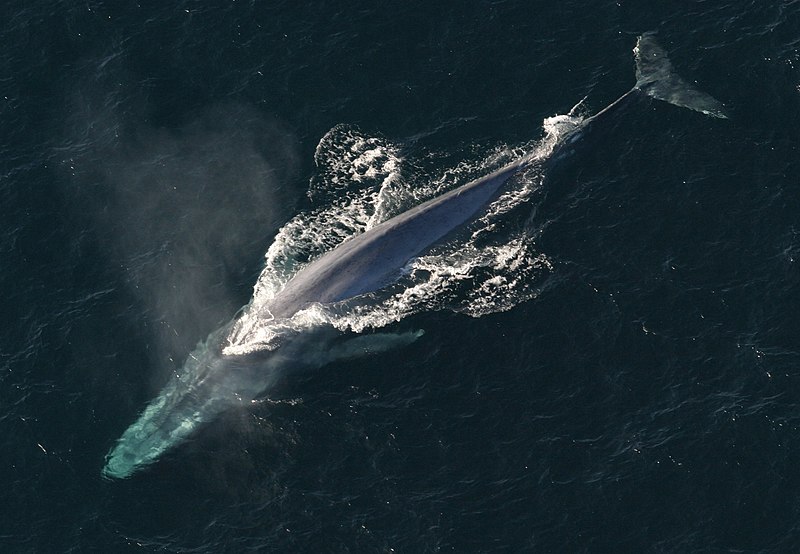
From ScienceDaily:
In one of the most comprehensive studies of body size evolution ever conducted, Stanford scientists have found fresh support for Cope’s rule, a theory in biology that states that animal lineages tend to evolve toward larger sizes over time.
“We’ve known for some time now that the largest organisms alive today are larger than the largest organisms that were alive when life originated or even when animals first evolved,” said Jonathan Payne, a paleobiologist at Stanford’s School of Earth, Energy & Environmental Sciences.
What was unclear, however, was whether the average size of animals has been changing over time and, if so, whether that reflects a trend, or directionality, in body size evolution. “It’s not something that you can know by just studying living organisms or extrapolating from what you see over short time scales. If you do that, you will absolutely be wrong about the rate, and possibly also the direction,” Payne said.
The study, published in the Feb. 20 issue of the journal Science, reveals that over the past 542 million years, the mean sized of marine animals has increased 150-fold. “That’s the size difference between a sea urchin that is about 2 inches long versus one that is nearly a foot long,” Heim said. “This may not seem like a lot, but it represents a big jump.”
The research also found that the increase in body size that has occurred since animals first appeared in the fossil record around 550 million years ago is not due to all animal lineages steadily growing bigger, but rather to the diversification of groups of organisms that were already larger than other groups early in the history of animal evolution.
“That’s also something we didn’t know before,” Payne said. “For reasons that we don’t completely understand, the classes with large body size appear to be the ones that over time have become differentially more diverse.”

The question has an interesting history, in that the late 19th century, “Cope’s rule” suggested that it was a universal trend. The trouble was,
Corals and dinosaurs seem to follow Cope’s rule, for example, but birds and insects do not. As a result, some scientists have wondered whether the pattern observed in land mammals is a real evolutionary phenomenon or merely a statistical one resulting from random, non-selective evolution, also known as neutral drift. “It’s possible that as evolution proceeds, there really is no preference for being larger or smaller,” said Noel Heim, a postdoctoral researcher in Payne’s lab. “What appears to be an increase in average body size may be due to neutral drift.”
But the study included nearly 75 percent of marine fossils (17,000 genera) over the last 542 million years, and
A pattern soon became apparent: not all classes-groups of related species and genera-of animals trended toward larger size, but those that were bigger tended to become more diverse over time. The team suspects this is due to advantages associated with a larger size, such as the ability to move faster, burrow more deeply and efficiently in sediment, or capture larger prey.
…
The team found that the neutral drift simulation could not explain the body size trends observed in the fossil record. “The degree of increase in both mean and maximum body size just aren’t well explained by neutral drift,” Heim said. “It appears that you actually need some active evolutionary process that promotes larger sizes.”

Here’s the abstract at Science:
Cope’s rule proposes that animal lineages evolve toward larger body size over time. To test this hypothesis across all marine animals, we compiled a data set of body sizes for 17,208 genera of marine animals spanning the past 542 million years. Mean biovolume across genera has increased by a factor of 150 since the Cambrian, whereas minimum biovolume has decreased by less than a factor of 10, and maximum biovolume has increased by more than a factor of 100,000. Neutral drift from a small initial value cannot explain this pattern. Instead, most of the size increase reflects differential diversification across classes, indicating that the pattern does not reflect a simple scaling-up of widespread and persistent selection for larger size within populations. (paywall)
From the BBC
Measured by volume, today’s tiniest sea critter is less than 10 times smaller than its Cambrian counterpart; both are minuscule, sub-millimetre crustaceans. But at the other end of the scale, the mighty blue whale is more than 100,000 times the size of the largest animal the Cambrian could offer: a trilobite less than half a metre long.
…
”There is this trend to increasing size – but a real kick comes when you have air-breathers re-entering the water” – Dr Michael Berenbrink, University of Liverpool
The version that best matched the real fossil history was one with a genuine size advantage.
Largest animal that has ever lived?: Comparatively recent “size stakes” entry, the blue whale
By considerable measure, the largest known animal on Earth is the blue whale. Mature blue whales can measure anywhere from 75 feet (23 m) to 100 feet (30.5 m) from head to tail, and can weigh as much as 150 tons (136 metric tons). That’s as long as an 8- to 10-story building and as heavy as about 112 adult male giraffes! These days, most adult blue whales are only 75 to 80 feet long; whalers hunted down most of the super giants. Female blue whales generally weigh more than the males. The largest blue whale to date is a female that weighed 389,760 pounds (176,792 kg).
Possibly, returning to the water meant that the whale was freed from the physics problems of a vast size on land?
Follow UD News at Twitter!
“Built so perfectly” “A living submarine”